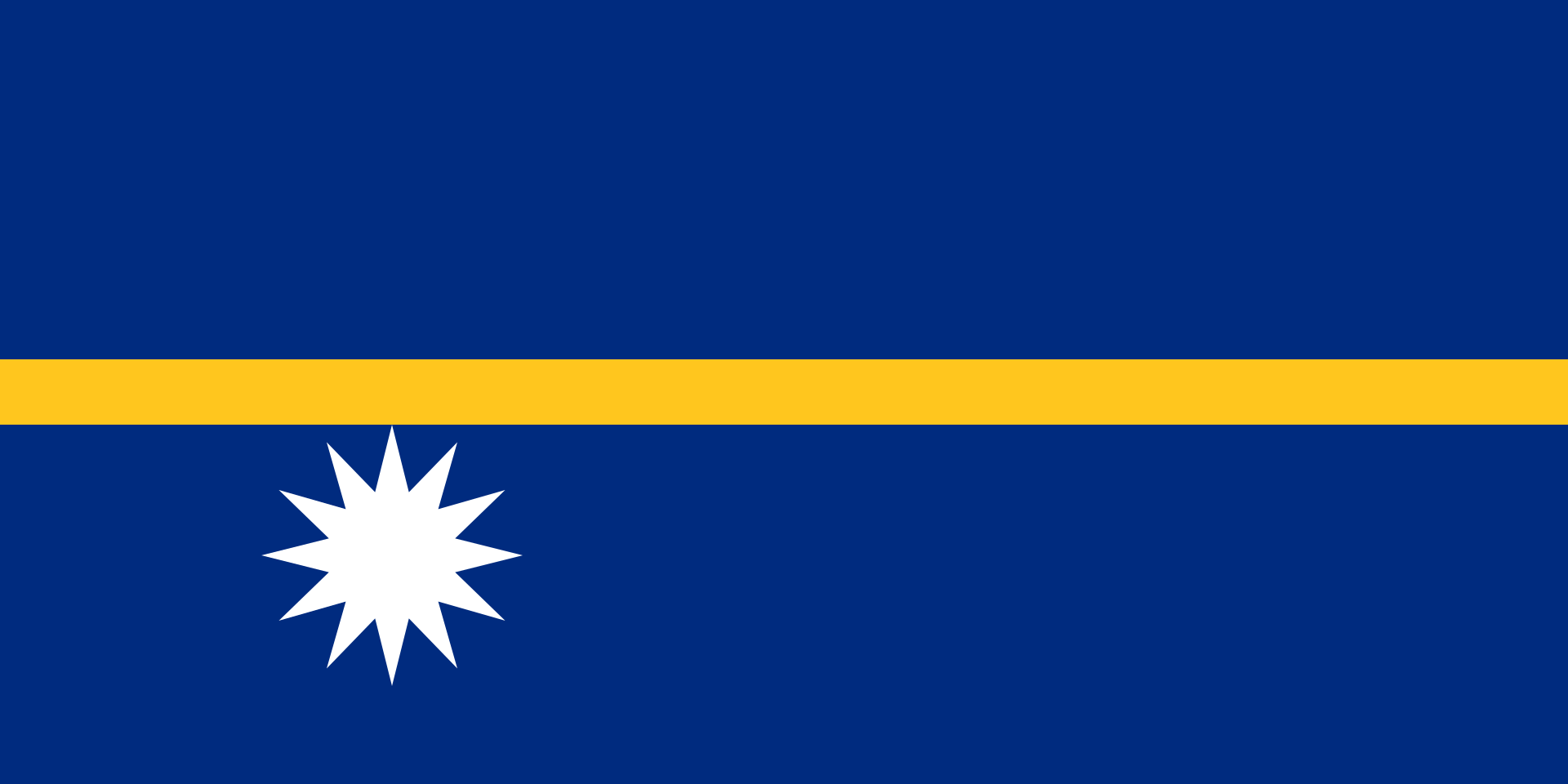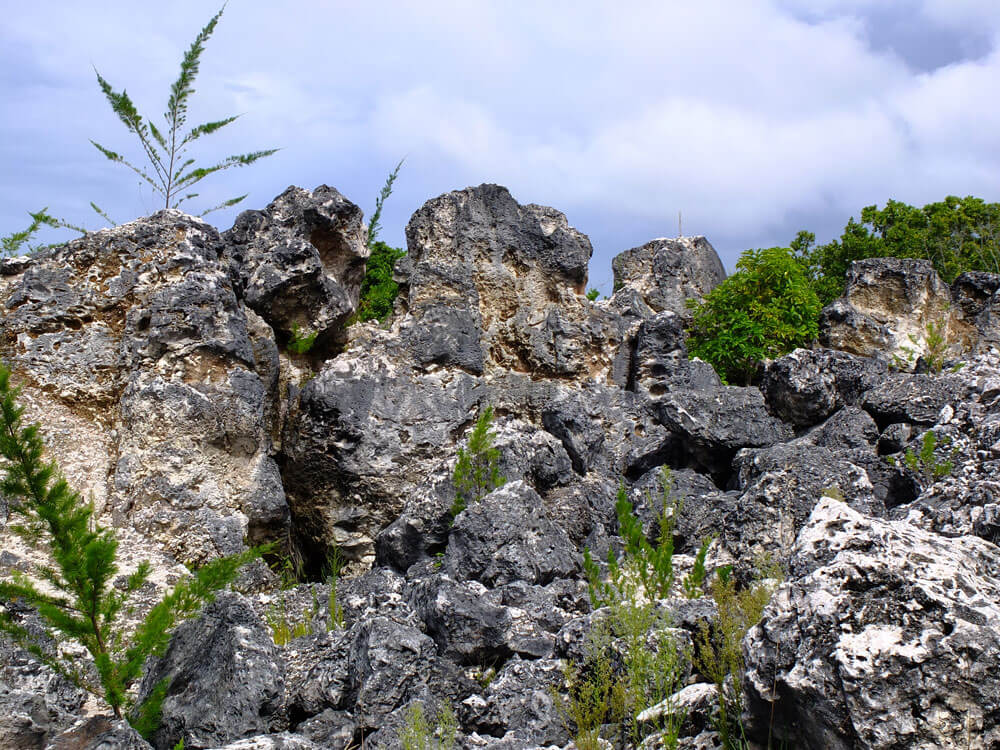Nauru

Region: Pacific
Gained independence: 31 January 1968
Joined Commonwealth: 1968
Head of State: Lionel Aingimea
United Nations HDI Ranking (2020): N/A
Official language: English
Timezone: GMT+12hrs
Currency: Australian dollar
Doing Business Rankings (2020): N/A
Nauru, a raised coral island, is a Micronesian Pacific Island country located just 40 km south of the Equator with land area of just 21 sq.km. It is the third smallest territory after Monaco and The Holy See (Vatican City). The closest neighbouring country is Kiribati located about 300 km to the east.
Nauru does not have an official capital, although some consider the city of Yaren as such due to the government offices being located there. In the centre of the island coral cliffs stand at up to 200 feet tall, with the surrounding plateau largely composed of rock phosphates. An endorheic lake called the Buada Lagoon can be found in the southwest of the country and fertile, yet narrow stretches of soil encircle the coastal areas of the country. Mineral deposits used to cover more than 65% of the land but extraction has left jagged protruding piles of limestone bedrocks that give the country an ethereal atmosphere.
Demographics
The population of Nauru is estimated to be around 12,511 as of July 2021. The population is divided into twelve tribes and is dispersed somewhat evenly across the island since there is no established capital although most of the governmental and judicial offices are in the district of Yaren. 89% of the population is Nauruan, 6.6% are mixed Nauruan and 2% are I-Kiribati. The official language is Nauruan which is spoken by 93% of the population, while English is used for official documents and governmental purposes. Other languages spoken in the territory is I-Kiribati (5%) and Chinese (2%). Christianity is the dominant religion in the region. 60% of the population is Protestant whilst 33% of the population is Roman Catholic.
Nauru is one of the few countries with 100% urban population, mainly due to its small land area. Nauru has a young population with 47% of the population below the age of 25.
History
The earliest evidence of civilisation in Nauru is recorded to be from 3000 years ago when the Micronesians and Polynesians voyagers, who branched into 12 different tribes spread out in the island. It was first sighted by English ships in 1798 but contact between the Europeans and the indigenous was not established until the 1830s when Nauru’s ports were opened to foreign whaling vessels. After which, the introduction of alcohol and guns by these foreigners sparked intra-island war amongst the competing tribes and districts which peaked in the 1880s and has said to have almost halved the population from 1400 people down to 900. German traders present on the island frustrated by the hostilities and foreign competition over the Pacific territory convinced the German government, including Otto von Bismarck’s son, to sign the Anglo-German declarations of 1886 whereby Nauru was incorporated into the Marshall Islands protectorate in 1888, and the subsequent arrival of German forces and administration to the island, quelled the decades long in-fighting. In 1906, due to the discovery of large phosphate reserves, the German administration, along with the British concern named the Pacific Phosphate Company, began mining operations in the following year. In 1914 with the beginning of World War 1, Australian forces defeated German forces and took over Nauru. With the end of the War in 1919, Nauru became a League of Nations mandated territory under Australian administration primarily, along with Britain and New Zealand. These three governments took over the phosphate mining via a joint commission called the British Phosphate Commission.
During the Second World War, German and Japanese forces fought for dominance in Nauru, with Japan eventually succeeded in August 1942, and the population was taken to Truk (currently Chuk), including notable politician Hammer DeRoburt, to work as labourers in military encampments. Australian control was re-established in September 1945 and in November of 1947, the administration system of Nauru under the League of Nations was reinstated under the United Nations, and the operations of the British Phosphate Commission resumed.
The first movement towards independence began in the 1950s when Hammer DeRoburt, a politician with chiefly status in the local government council since 1955, began negotiations for local ownership of the phosphate industry as well as political autonomy for Nauru. Pressure for independence kept mounting in the late 1950s and early 1960s. Eventually, when mining had caused such environmental damage that discussions had begun to resettle Nauruans on an island on the northern coast of Australia, which was rejected by DeRoburt and was backed by almost all the Nauruan population. After gruelling negotiations Australia agreed to grant Nauru full independence in a discussion held in October 1967; and the formal Independence Day fell on the January 31, 1968, which was also the 22nd anniversary of the return of the Nauruan people from Truk. Hammer DeRoburt became the first president of Nauru and remained so till 1989, except for a brief lapse in 196-78 and the latter half of 1986 due to government opponents vote of no confidence. Before the end of his terms, in 1982 he was knighted by Queen Elizabeth II. In 1970, the British Phosphate Commission handed over administration of the resources to the Nauru Phosphate Corporation, the returns of which gave the island country the second highest GDP per capita in the world. Nauru official joined the Commonwealth in 1999.

Key Dates
1798 Captain John Fearn sails past Nauru from New Zealand and names it Pleasant Island.
1888 Nauru annexed by Germany and incorporated into Marshall Islands Protectorate.
1900 British company discovers phosphate in Nauru
1906 Anglo-German agreement for cooperation in phosphate mining begins.
1914 Australia gains control of Nauru.
1919 League of Nations grants joint mandate of Nauru to Australia, Great Britain, and New Zealand.
1942-45 Japanese occupation of Nauru
1947 Nauru made UN trust territory under Australian administration.
1966 First Nauruan Legislative Council elected.
1968 Independence granted on January 31; DeRoburt elected president.
1969 Nauru becomes associate member of Commonwealth.
1999 Nauru joins the United Nations.
2003 Bernard Dowiyogo becomes president in January.
2003 Rene Harris elected as president in August.
2006 Experts warn Nauru that their phosphate resources are near exhaustion
Legal System and Government
Nauru is a democratic republic with the president as both the head of state and government. The president is indirectly elected by members of the parliament, which itself is unicameral with 19 members who may be elected for a maximum of three years. From amongst the parliament members the president elects 5-6 for the formation of the cabinet. Legislative power rests with both the government and the parliament.
The Supreme Court in Nauru hears appeals from both the district courts and from the family courts. Should an appeal be lodged against a decision of the Supreme Court, the Appellate Court of Nauru or the High Court of Australia will hear the matter. There are also Public Service and Police Appeal Boards for appeals relating to public interest.
Economy
Nauru is classified as an upper-middle-income country with a GDP per capita of US$10,648, slightly below the world average of US$12,236 for the year 2021. The nation has a small population and due to its atoll-centric topography it is a net-importer of foodstuffs, petroleum products, machinery and chemicals. The economy of Nauru was primarily based on its industrial sector which contributed 33% of GDP in the latest estimates of 2012, largely through phosphate mining. With phosphate reserves dwindling by the early 2010s, the government has sought to diversify exports and sectoral focuses, leading to services becoming the predominant sector of the nation, though secondary mining of phosphate left over is still a significant export commodity. According to 2021 IMF estimates, Nauru’s manufacturing industry contributes 7.5% of GDP, largely through the manufacturing and processing of coconut products, handicrafts and phosphate mining as mentioned.
20% of Nauru’s land is arable and while the sector has potential, particularly via sustainable pathways, the country imports 90% of its food resources and the sector currently contributes 4.8% to GDP and employs less than 10% of the population; coconuts are the main harvest and the locals partake predominantly in fishing for local food consumption needs. Services comprise the majority of GDP revenue, contributing 73% of GDP and employing most of the working population. The main service industries include transport, logistics and government services. Australia is Nauru’s primary source for foreign direct investment. For the last four years, Australia’s annual contribution to Nauru’s economy is averaged at AU$24.6 million. Venturing outside the Pacific and finding diversified FDI sources is a top priority of the Nauruan government.
Trade
In 2021, Nauru’s GDP was reported to be US$133.2 million, with an annual growth rate of 12.4%. In the year 2021, exports amounted to a total of US$209.7 million. Nauru’s exports comprised of fish, crustaceans, molluscs and other aquatic invertebrates (63.9%); other notable exports include salt, sulphur, earths, cement and plastering materials (17.9%) and vehicles rolling stock (other than tramway and railway) (12.7%). These exports were largely destined for Thailand (47.8%), Saudi Arabia (12.5%) and the Philippines (10.9%).
Imports in 2021 amounted to US$112.6 million. Top imports bought were commodities not elsewhere specified [HS Code 99] (14.9%), mineral fuels, mineral oils, and products of their distillation (14.2%), machinery, mechanical appliances, nuclear reactors, boilers; parts thereof (11.1%) and vehicles other than railway or tramway rolling stock (8.2%). The major import supplier countries for the year were Taiwan (51.6%), Australia (37%), Japan (2.7%) and China (1.7%).
Nauru is a member of the Pacific Island Countries Trade Agreement (PICTA) and has also signed the Economic Partnership Agreement (EPA) with the European Union. Additionally, Nauru is a member of the World Trade Organization (WTO) and has signed the General Agreement on Tariffs and Trade (GATT) as well as the Agreement on Trade-Related Aspects of Intellectual Property Rights (TRIPS) and the Pacific Agreement on Closer Economic Relations Plus (PACER Plus).
Investment Opportunities
Nauru is a small island nation in the Pacific Ocean, known for its phosphate reserves and fishing industry. The government of Nauru has been seeking to attract foreign investment in recent years, particularly in areas such as tourism, mining, and agriculture.
One potential investment opportunity in Nauru is in the tourism sector. The government has been working to develop the island’s infrastructure to support tourism, such as building new hotels and improving transportation options with particular interest in eco-tourism and sustainable hospitality services given the nation’s status as a small island developing state (SIDS). Nauru also has several unique natural attractions, such as its coral reefs and World War II-era relics. Agriculture is another area where investment may be possible in Nauru. The island has a limited amount of arable land, but the government has been working to promote sustainable agriculture practices and increase food security.
The government of Nauru launched the Nauru National Integrated Infrastructure Strategic Plan in August 2020 to develop a comprehensive framework for the government’s infrastructure investment and management priorities for the coming decade.
Sources
https://thecommonwealth.org/our-member-countries/nauru
https://www.britannica.com/place/Nauru
https://www.cia.gov/library/publications/the-world-factbook/geos/nr.html
https://www.rnz.co.nz/collections/u/new-flags-flying/nff-nauru/nauru-history
https://www.bbc.com/news/world-asia-pacific-15433901
https://www.nationsencyclopedia.com/Asia-and-Oceania/Nauru-JUDICIAL-SYSTEM.html
https://embassyhongkong.com/nauruan/
https://oec.world/en/profile/country/nru
https://www.state.gov/u-s-relations-with-nauru/
https://www.dfat.gov.au/geo/nauru/Pages/nauru-country-brief
https://www.dfat.gov.au/geo/nauru/development-assistance/Pages/development-assistance-in-nauru
https://www.adb.org/offices/pacific/overview/nauru
https://publicadministration.un.org/egovkb/en-us/Data/Country-Information/id/119-Nauru http://www.clgf.org.uk/default/assets/File/Country_profiles/Nauru.pdf
https://knoema.com/atlas/Nauru/GDP
https://www.forumsec.org/picta-member-countries-nauru/
https://investmentpolicy.unctad.org/international-investment-agreements/countries/146/nauru https://www.unescap.org/sites/default/files/Situational%20Analysis%20of%20Employment%20in%20Nauru.pdf
https://www.elibrary.imf.org/view/journals/002/2022/028/article-A001-en.xml